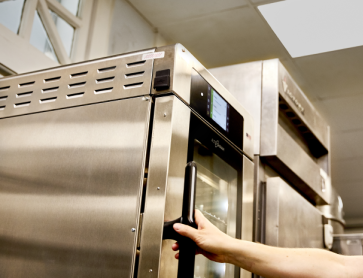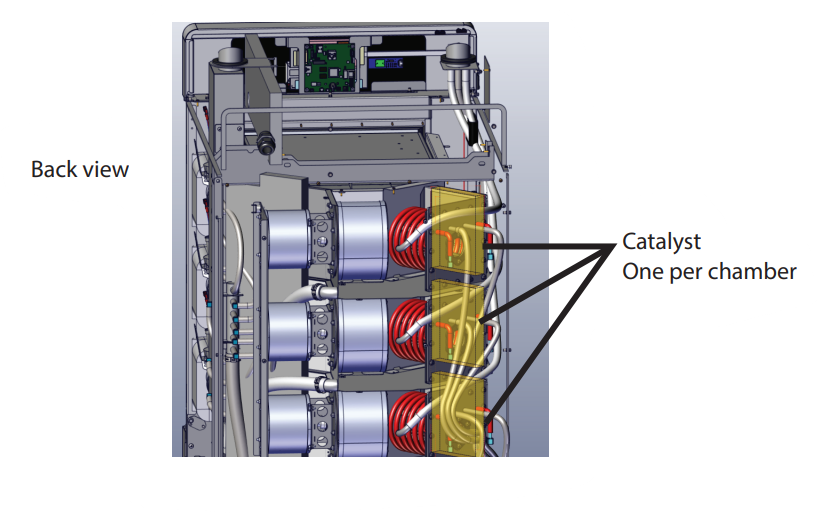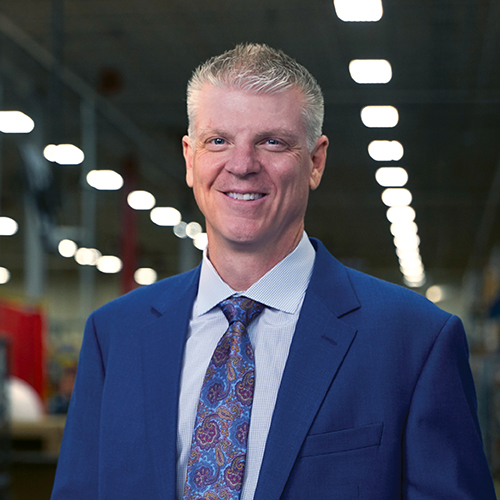Alto-Shaam
7 Benefits of Choosing Ventless Commercial Kitchen Equipment
Why are more kitchens going ventless? Learn how ventless ovens can lower costs, increase kitchen flexibility and support with efficiencies.

Opening a new restaurant or adding food service to your business? Between finding a space, developing a menu, securing equipment and hiring and training staff, getting started can be challenging. With ventless equipment, operators can reap a variety of benefits that can help increase their chances of success. Ventless kitchen equipment are self-contained appliances with built-in filtration systems that eliminate smoke, grease, and odors without external ventilation. Their popularity has surged in recent years, with market growth projected at 7.2% CAGR through 2030.
This growth is driven by consumer demand and increasing adoption in space-constrained environments such as food trucks, bars, pop-ups, convenience stores, stadiums, airport kiosks, and other venues where installing traditional overhead ventilation is impractical. With limited time offers (LTOs) growing 10% year over year, the need for versatile, flexible equipment to cook a variety of quality food options in non-traditional spaces is pertinent now more than ever.
From saving time and money on food prep to maximizing efficiency in tight spaces, we’ll explore the key benefits of ventless oven technology — plus the different types of ventless systems available and how they can elevate your kitchen setup.
What is ventless technology?
Ventless commercial cooking equipment uses advanced air recirculation and built-in catalyst technology to eliminate smoke, grease, and odors—without the need for traditional ventilation. Unlike conventional systems, ventless appliances convert vapors into harmless CO₂ and H₂O – the same substances humans exhale and are naturally present in the environment.
Under the EPA 202 standard, ventless appliances are tested with high-emission foods (like raw chicken) to ensure they stay within safe limits. If emissions are under the 5.0 mg/m³ threshold, the output is deemed safe for use in enclosed, unventilated spaces.
There are a variety of ventless oven solutions available on the commercial kitchen market like speed-cook ovens and microwave-assisted ovens. Alto-Shaam offers several ventless options, including Cook & Hold ovens, Converge® multi-cook combi ovens, Vector® multi-cook ovens, and select Prodigi™ combi ovens compatible with our ventless hood systems — each designed to deliver a range of performance and operational benefits.
How does ventless oven technology work?
Ventless cooking equipment works by using built-in catalysts to break down grease vapors, smoke, and volatile organic compounds (VOCs) at a molecular level. This process converts harmful compounds into CO₂ and H₂O, effectively neutralizing pollutants that would otherwise degrade air quality.
However, ventless oven technology can work differently, depending on the oven it is made for. For instance, Alto-Shaam combi ovens have an optional ventless hood attachment, called a Ventech™ hood, which condenses steam and removes grease-laden air, vapors, and lingering smoke, eliminating the need for traditional kitchen hoods that require connection to an external ventilation system to exhaust grease, smoke, heat, and odors to the outside of the building.

Compared to Alto-Shaam multi-cook ovens — such as the Vector® Series — these ventless ovens do not require a Ventech hood because they have one catalyst per oven chamber to safely manage emissions without the need for a separate hood. Other ventless solutions on the market, including speed-cook ovens and microwave assist oven use catalytic converters.

Benefits of Ventless Technology
Ventless kitchen equipment offers major advantages for modern foodservice setups, including reduced installation costs, flexible placement in tight spaces, and improved energy efficiency. These benefits make it an ideal choice when planning a new commercial kitchen or enhancing an existing one. Let’s take a closer look at why ventless cooking equipment could be the right fit for your restaurant.
1. Reduce your installation and operation costs
According to a survey by Restaurant Owner, the total median startup costs average at $375,000, with some upper quartile dining establishments reaching three-quarters of a million dollars in start-up costs. These costs are even higher depending on restaurant location, thanks to leasing prices. In New York, for example, restaurateurs spend a staggering 456% of the local average annual salary on leasing costs alone. Hawaii follows closely with 394%, and Utah at 282%, highlighting the need to significantly reduce overhead and improve feasibility in these cost-prohibitive environments.
A key benefit of ventless cooking equipment is that it significantly reduces installation costs. Traditional ventilation systems can be a major expense when opening a new food business, with the installation of a commercial hood system alone can cost $2,000 per linear foot, meaning a standard 12-foot hood may total $24,000 or more. And that’s before factoring in your cost to lease restaurant space and daily utility expenses.
The average annual lease cost for a restaurant in the United States is approximately $100,000, based on an average restaurant size of 4,000 square feet. Additionally, the yearly hood operating cost is $20,000 (based on hood operating 15 hours at $56 per day). However, most ventless kitchen equipment operates more efficiently than equipment that requires ventilation. A ventless commercial oven, such as Alto-Shaam's Cook & Hold ovens, for example, costs less than $2 per day to operate.
Ventless equipment eliminates the need for expensive hoods and external ventilation, making it a smart option for cost-conscious operators — especially those in high-rent markets like New York, Hawaii, and Utah.
For example, Pequeños Tapas & Wine Bar, based in Urbana, Ohio, saved least $70,000 in installation costs by opting for a ventless kitchen with Alto-Shaam's two stacked Vector® H2H multi-cook ovens.
"We saved at least $70,000 by not needing to install a ventilation system or add gas lines, which alone would have cost $8,000... not to mention the ongoing maintenance it would have required."
Jonathan Kouse, Head Chef and Co-Owner of Pequeños Tapas & Wine Bar
2. Reclaim kitchen space
Many ideal restaurant locations — like downtown office towers or historic buildings — can’t accommodate the renovations needed for traditional ventilation, as vented hood and range setups can typically require 10 to 14 feet or more of linear wall space.
In contrast, ventless ovens, like Alto-Shaam's Converge® multi-cook combi ovens, have a much smaller footprint of approximately 2 feet (24 inches). These ventless ovens offer a compact alternative, eliminating the need for external ductwork and allowing for flexible placement in various kitchen layouts. Even this countertop oven can become the foundation of a profitable operation in a kitchen with space or ventilation constraints.
For Dash In, Maryland, the team leveraged Vector ventless ovens to expand their foodservice program without expanding physical kitchen space.
"We’re doing more business in less space. Being able to get the right equipment that allows us to have fewer people running the equipment and less space in the kitchen is really key."
Barbara Nova, Senior Director at Dash In
3. Minimize energy consumption and food waste
Ventless ovens offer superior energy and food efficiency by eliminating the need for ventilation hoods, reducing electricity and HVAC costs. A traditional hood system can cost over $1,000 per year in energy alone, while a ventless oven eliminates that expense entirely as there is no need for traditional hood systems or ductwork. Ventless ovens help lower a facility’s overall energy footprint and operational carbon output, helping your kitchen also support green building practices and eco-conscious business goals.
Alto-Shaam's ventless Cook & Hold ovens use Halo Heat® technology, which utilizes a radiant, heated cable to improve cooking consistency and boost yields by 15-20%, reducing food waste and energy use in a closed, low temperature environment. Its waterless, hood-free design consumes less energy and water than a traditional ventilation and steam system, which in turn reduces operating costs while ensuring even cooking without harsh heat or humidity.
4. Enhance kitchen safety
A 2017 NFPA report found an average of 7,410 restaurant fires annually in the U.S., many starting in ventilation systems. Poorly maintained hoods, ducts, and exhausts are major fire hazards in commercial kitchens. Poorly maintained hoods, ducts, and exhausts are major fire hazards in commercial kitchens.
Ventless cooking technology enhances kitchen safety through its flameless, electric operation and integrated filtration systems that remove smoke, grease, and odors —resulting in cleaner air and reduced fire risk.
Ovens like Vector and Converge multi-cook ovens maintain cooler kitchen environments, improving employee comfort and reducing heat stress while providing unmatched production and food quality. Structured Air® Technology in multi-cook ovens deliver high-velocity, vertical upward and downward air flow, creating an air curtain when the door is opened, saving from heat loss and a blast of hot air when the door is opened. This optimized, focused heat delivers faster, more even and consistent cooking than any other cooking methods without overheating the kitchen workspace.
Additionally, the compact, hood-free design of ventless kitchen equipment saves valuable space, allowing for more open, efficient layouts that minimize crowding and tripping hazards. This flexibility enables better employee spacing and workflow, aligning with modern safety standards (like UL and NFPA 96), and supporting a healthier, more ergonomic kitchen environment.
Applicable Alto-Shaam ovens are UL-listed for ventless operation, meaning they meet strict safety standards for removing grease, smoke, and odors, ensuring safer, cleaner kitchen environments. They are also EPA 202 certified, allowing for the safe cooking of raw proteins, including bone-in, skin-on chicken, without external ventilation. These certifications support compliance, food safety, and flexibility across a wide range of commercial cooking applications.
5. Expand menu variety and LTOs
The compact, hood-free design of ventless ovens allows them to be installed virtually anywhere — no costly renovations or ventilation systems needed. This makes them perfect for non-traditional spaces like convenience stores, food trucks, and businesses seeking rapid expansion or flexible menu changes.
With ventless, multi-functional equipment, operators can easily introduce LTOs in any space, while achieving quality results that drive traffic and keep up with consumer needs and preferences. According to a recent Technomic study, operators are leaning more on consumer demand for craveability and innovation, with 78% of consumers selecting restaurants with craveable items, and 55% of consumers selecting restaurants that offer LTOs.
Alto-Shaam’s ventless ovens enable rapid deployment of new kitchens and menu items, especially when combined with cooking management systems like ChefLinc™ that ensure easy operation and make it easier to add new and exciting dishes to the menu. Unlike other ventless equipment — such as speed-cook or microwave-assisted ovens, which are limited to low-grease foods like pepperoni pizza, select Alto-Shaam oven models are EPA 202 certified, allowing safe cooking of raw proteins, including bone-in, skin-on chicken. This expanded capability offers far greater menu versatility, making it easier for operators to quickly adapt, scale, and innovate in a variety of locations.
Toss & Co., a healthy eatery in Dubai Design District, uses Alto-Shaam’s ventless Vector® H Series multi-cook oven to cook their full menu without external ventilation while eliminating odors that typically occur from traditional grills. Its ventless technology combined with independent chambers allows precise, simultaneous cooking of multiple items, cutting labor and boosting speed — all in a compact, flexible design.
“We cook everything in the Vector [ventless oven], from salmon to croissants and falafels. We even use the oven to make soups. The [ventless] technology is so advanced that even if fries and falafels are baked, they come out crispy and golden. The meat and fish are cooked consistently, and the oven emits a sound when the food is ready. We don’t need someone to consistently look after them, which speeds up our service greatly.”
Mona Bhojwani, owner of Toss & Co
6. Simplify staff training
Anyone who’s been remotely involved in the restaurant industry knows that staffing — or the lack of it — has been a significant issue for operators. Chances are that if you’re managing a restaurant, you’re doing so without a full staff, and many of the people you have working in the kitchen have only been doing so for weeks or months.
Many of today’s ventless ovens include features that make them easy to operate with minimal training. For example. Alto-Shaam’s Vector® multi-cook ovens, Cook & Hold ovens Prodigi combi ovens and Converge® multi-cook combi ovens can program recipes via an easy-to-use interface – called ChefLinc™, reducing the need for skilled labor and ensuring consistency of your menu.
At Dash In, the ChefLinc™ system in their ventless Vector ovens enables remote oven updates in minutes, allowing staff to execute menu changes with minimal training — boosting productivity and efficiency.
"Our employees love the technology that ChefLinc provides ... the technology makes it so they feel they are completely supported all the time.”
Barbara Nova, Senior Director at Dash In
7. Explore multiple cooking applications
Ventless ovens offer unmatched versatility, enabling operators to diversify their cooking methods with ease. From low-temperature, overnight cooking to multi-chamber designs that cook three to four different menu items simultaneously—without flavor transfer—they adapt to a wide range of culinary needs.
Integrated ventless hood systems efficiently condense steam and capture grease-laden air, vapors, and smoke, ensuring a cleaner kitchen environment and compliance with safety and air quality standards.
At Alto-Shaam, our ventless Cook & Hold ovens are ideal for low-temperature applications, such as slow roasting and overnight cooking that maintains optimal moisture and texture, ensuring superior results with minimal supervision.
Additionally, our Vector® H Series multi-cook ovens provide up to four independent chambers in a single countertop unit — each with its own catalyst for simultaneous, flavor-transfer-free cooking at different temperatures, fan speeds, and times. For added versatility, the Converge® multi-cook combi ovens combine combi cooking and multi-cook technology with humidity control, enabling you to steam, bake, air fry, and grill all at once.
Alto-Shaam’s ventless ovens let kitchens experiment more with less — offering flexible, multi-item cooking in compact spaces without added equipment, ventilation, or operational complexity.
“I would highly recommend the Vector [ventless oven] to any restaurateur. Because of its multiple chambers, we can cook different foods at the same time and at different temperatures. The oven does the job of three different ovens in one.”
Mona Bhojwani, owner of Toss & Co
Discover how Toss & Co are cooking smarter with ventless
Success powered by Alto-Shaam ventless technology
While various types of ventless ovens exist, Alto-Shaam sets the standard with certified, high-performance ventless equipment designed for real culinary demands.
Speed cook ovens (microwave hybrids) are fast and compact but often compromise food quality, especially with baked goods or raw proteins.
High-speed impingement ovens heat quickly using forced air but can result in uneven cooking due to inconsistent airflow.
Multi-cook ovens offer superior flexibility with up to four independent chambers and Structured Air Technology®, allowing precise, simultaneous cooking — EPA 202 certified for raw proteins.
Ventech™ ventless hoods pair with Prodigi™ combi ovens to eliminate the need for costly hoods, capturing steam and grease efficiently in a plug-and-play format.
With Alto-Shaam, you’re not just getting ventless — our ventless units each come with a certificate of compliance. Alto-Shaam’s dedicated team of experts supports operators in securing local approvals. It’s superior ventless technology — proven, certified, and built for kitchen success.

“At Alto-Shaam, we believe ventless technology should do more than just eliminate the need for traditional ventilation — it should empower kitchens to achieve greater flexibility, efficiency, and food quality.
Our certified ventless solutions deliver consistent, high-performance results with the ability to cook raw proteins where other ventless and ventilated systems fall short.
Operators can save on costly hood installations, simplify compliance, and trust that every meal meets the highest culinary standards — backed by our dedicated team and proven certifications."
Steve Maahs, CEO, Alto-Shaam
Transform your kitchen with ventless technology today!
Ventless ovens offer major advantages over traditional ventilated systems—eliminating the need for costly hoods, ductwork, and installation, while saving energy and maximizing kitchen space. They enable flexible placement, faster setup, and easier compliance with safety codes.
Alto-Shaam takes these benefits further with EPA 202-certified models, multi-cook versatility, and industry-leading performance. A smart, space-saving solution for modern kitchens, explore a ventless setup for your kitchen.
